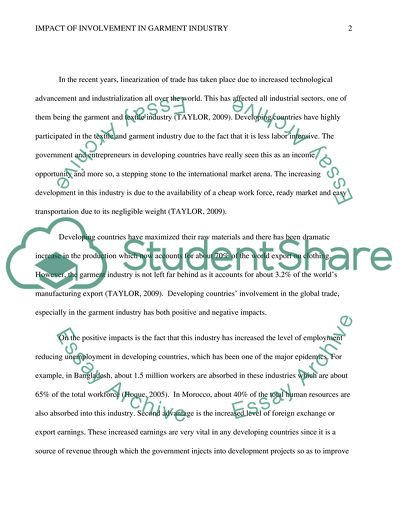For developing countries what are the advantages and disadvantages of Assignment. Retrieved from https://studentshare.org/macro-microeconomics/1641149-for-developing-countries-what-are-the-advantages-and-disadvantages-of-participating-in-the-global-garment-industry
For Developing Countries What Are the Advantages and Disadvantages of Assignment. https://studentshare.org/macro-microeconomics/1641149-for-developing-countries-what-are-the-advantages-and-disadvantages-of-participating-in-the-global-garment-industry.


